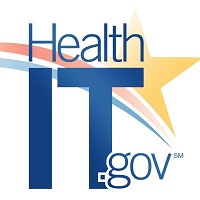 By Elisabeth Myers and Jeff Smith, ONC
By Elisabeth Myers and Jeff Smith, ONC
Twitter: @ONC_HealthIT
Recently, the Centers for Medicare & Medicaid Services (CMS) proposed modifications to its Promoting Interoperability Program that, if finalized, would require hospitals to report on four public health and clinical data exchange measures. This proposal is the latest in a series of coordinated steps taken across HHS to leverage data standards and specifications adopted as part of ONC’s Health IT Certification Program to enable nationwide public health reporting.
To mitigate and recover from widespread communicable disease, such as COVID-19, government and public health officials need a detailed view of where cases are growing across the country and which patient populations are most affected. One tool used by public health authorities to track and respond to diseases is known as electronic case reporting.
The core value of electronic case reporting is to provide real-time information from clinical settings to public health organizations about reportable conditions and possible outbreaks. Electronic case reporting automates what has otherwise been manually reported by healthcare providers. More importantly, it improves the completeness of reporting and includes information that is critical for public health such as demographic data to take action such as case investigation and contact tracing.
One of the primary challenges for nationwide electronic case reporting has been a lack of implementation of eCR capabilities in EHR products using published eCR standards. Because electronic case reporting was only added as an optional measure late in the Promoting Interoperability Program and the number of required PH measures did not change, not many hospitals have chosen to receive Promoting Interoperability credit through the electronic case reporting measure option. Consequently, the demand for ONC-certified health IT products with electronic case reporting functionality has been low.
This changed in 2020. The pandemic created new urgency to report cases of COVID-19 and due to CMS requirements established in 2017, hospitals participating in the Promoting Interoperability program had adopted 2015 Edition Certification Criteria by the end of 2019. Together, these factors provided an opportunity for a new electronic case reporting application – eCR Now – to play a role. Through an initiative led by the Centers for Disease Control and Prevention (CDC) and the Association of Public Health Laboratories, eCR Now provides healthcare providers with a truly automated electronic case reporting solution. Specifically, eCR Now uses the Health Level 7 (HL7®) International Fast Healthcare Interoperability Resources (FHIR®) and backend system connection or SMART on FHIR App Launch capabilities so that EHR developers can rapidly integrate the app with their products and participate in electronic case reporting. Some EHR vendors have also built “native” eCR capabilities into their products and made them available to their clients.
According to CDC data, all 50 states, the District of Columbia, Puerto Rico and 13 large local jurisdictions have connected to the eCR Now shared services platform and are currently receiving electronic case reports, with more than 8,800 healthcare facilities on board and 8.2 million reports for COVID-19 received by public health authorities as of May 25, 2021. It’s noteworthy that this rapid adoption occurred largely in the last year – during a pandemic – demonstrating the opportunity to rapidly implement health IT solutions by leveraging modern technology standards and specifications.
Creating a Pathway for EHR Developers to Support eCR Now
While the success of eCR Now app is undeniable, we need to make sure it can be used by hospitals participating in the Promoting Interoperability Program and clinicians participating in the Promoting Interoperability performance category. The FHIR-based eCR Now app may rely on ONC-certified health IT to work, but it is not itself a stand-alone certified “Health IT Module.” To prevent any confusion ONC clarified that it is possible to use eCR Now functionality as part of a certified health IT module to demonstrate conformance with the existing electronic case reporting certification criterion “Transmission to public health agencies — electronic case reporting.”
This means that certified health IT developers can contact their ONC-Authorized Certification Bodies (ONC-ACB) and “self-declare” that their products have integrated the eCR Now app as part of their certified Health IT Module if they provide proper documentation (see “Technical Explanations and Clarifications”). Certified health IT developers who do not already have a certified Health IT Module for electronic case reporting, can contact their ONC-ACB to expand their certification by providing their ONC-ACB documentation that they support eCR Now functionality and meet any other applicable requirements.
The scale and speed of eCR Now adoption has demonstrated the value of leveraging modern, consistent standards, such as FHIR. Working together with federal partners at the CDC and CMS, ONC believes this approach can help to support an industry-developed solution that meets a national need.
Detailed information about electronic case reporting and the Certification Companion Guide as well as other resources for health IT developers can be found by visiting the ONC Certification page.
More information about e-case reporting and the CDC is available at www.cdc.gov/ecr or download the fact sheet eCR Now: COVID-19 electronic Case Reporting for Healthcare Providers.
This article was originally published on Health IT Buzz and is syndicated here with permission.
